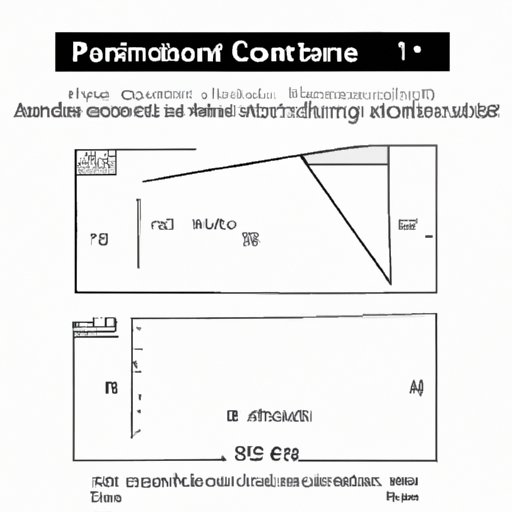Introduction
Whether you’re a student tackling geometry homework or an adult trying to measure the area of a room, knowing how to find the area of a parallelogram is a valuable skill. A parallelogram is a four-sided shape with opposite sides that are parallel and equal in length. This article provides a step-by-step guide on how to find the area of a parallelogram, along with real-world examples and common mistakes to avoid.
Step-by-Step Guide
To find the area of a parallelogram, follow these steps:
1. Measure the length of the base. The base is the distance between two opposite sides of the parallelogram, and it must be perpendicular to the height.
2. Measure the height of the parallelogram. The height is the perpendicular distance between the base and the opposite side of the parallelogram.
3. Multiply the base by the height to find the area.
Basic Formula
The formula for finding the area of a parallelogram is:
Area = base x height
In this formula, the base is the distance between two opposite sides of the parallelogram, and the height is the perpendicular distance between the base and the opposite side of the parallelogram. To correctly apply the formula, it’s essential to measure accurately and ensure that the base and height are perpendicular.
For example, if the base of a parallelogram measures 8 cm and the height measures 5 cm, the area can be calculated as follows:
Area = 8 cm x 5 cm = 40 square cm
Real World Examples
Finding the area of a parallelogram can be useful in many real-world situations. For example, it can be used to calculate the amount of wallpaper needed for a room, the amount of paint required to paint a wall, or the area of a floor that needs to be tiled. It’s also essential for students learning geometry and other mathematical concepts.
Common Mistakes to Avoid
One common mistake people make when trying to find the area of a parallelogram is using the wrong measurements. It’s crucial to ensure that the base and height are perpendicular to each other to obtain an accurate measurement.
Another common mistake is forgetting to convert measurements into the same units. For instance, if the base is measured in inches and the height is measured in centimeters, they must be converted into the same units before multiplying.
Comparison to Other Shapes
Comparing finding the area of a parallelogram to finding the area of other shapes, such as squares and circles, involves different formulas and measurements. For example, the formula for finding the area of a square is Area = side length x side length, while the formula for the area of a circle is Area = pi x (radius x radius). Parallelograms have the unique property that opposite sides are parallel and equal in length.
Different Units of Measurement
The area of a parallelogram can be found using different units of measurement, such as inches, centimeters, or square meters. It’s important to make conversions between units and understand how to apply the formula with different measurements. For example, if the base is measured in feet and the height is measured in inches, convert the height to feet before multiplying.
Practice Problems
Here are some practice problems related to finding the area of a parallelogram:
1. A parallelogram has a base of 10 cm and a height of 6 cm. What is its area?
2. If the base of a parallelogram is 4 inches and the height is 5 inches, what is the area in square inches?
3. The base of a parallelogram measures 12 meters, and the height is 5 meters. What is its area in square meters?
Solutions:
1. Area = 10 cm x 6 cm = 60 square cm
2. Area = 4 in x 5 in = 20 square inches
3. Area = 12 m x 5 m = 60 square meters
Conclusion
Knowing how to find the area of a parallelogram is essential for a variety of real-world situations and has practical applications for students learning mathematics. By following the basic formula and measuring accurately, you can easily find the area of a parallelogram. Remember to avoid common mistakes and practice solving problems to develop this valuable skill.
